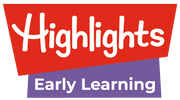How to Teach Self-Regulation Skills to Preschoolers
Children learn a lot from simply observing adult behavior. This is evident any time a child in class blurts out an embarrassing anecdote about their grown-up at home! What we say and do in front of little ones teaches them how to react to the world around them. This is why effective co-regulation and direct instruction make a great pair when teaching preschoolers self-regulation skills.

The Administration for Children and Families (ACF), a division of the U.S. Department of Health & Human Services, defines co-regulation as the “warm, responsive interactions and support, structure, coaching, and modeling provided by caregivers to foster self-regulation development in children.”
Concrete examples of co-regulation in the classroom include things like establishing a predictable, stable learning environment and responding to stressful situations calmly.
When children routinely witness positive emotional behaviors, they are adding valuable tools to their growing self-regulation toolboxes.
By the time they hit preschool, children’s attention spans and wait times are increasing, they are better at verbalizing their feelings, and they are beginning to show more empathy and understanding for others. To that end, it’s the perfect time to teach them how to self-regulate their emotions.
According to the Duke Center for Child and Family Policy for the ACF, self-regulation skills refer to “the act of managing thoughts and feelings to enable goal-directed actions.” Starting this developmental journey early is “an investment in later success, because stronger self-regulation predicts better performance in school, better relationships with others, and fewer behavioral difficulties.” In short, those who can cope with their emotions are better equipped to handle adversity and, as a result, will be more successful in life.
But teaching emotional self-regulation isn’t as cut and dry as teaching a child to count or tie their shoes. How do we effectively help preschoolers develop the self-regulation skills they need? From prevention to intervention, here are some great strategies:
Give Them Space
As with any skill, self-regulation must be practiced. If a caregiver swoops in to solve every problem (likely because they’re trying to avoid a meltdown!), the child doesn’t have an opportunity to practice controlling their emotions. Teachers need to allow space for big feelings, then provide subsequent guidance.
Set Boundaries & Expectations Early
Preschool teachers are the unsung heroes of controlling chaos. To the untrained eye, their classrooms may be perceived as loud and chaotic; however, teachers set and enforce boundaries and expectations at the outset, effectively creating a sense of security. There are few surprises in a structured environment, and this minimizes outbursts.
Prepare Them for Change
To help preschoolers switch between the many transitions that happen during their school day, it helps to tell them what’s coming next. A countdown or two-minute heads up that it’s almost time to put away art supplies allows time to mentally prepare and, hopefully, facilitate a more peaceful transition to the next activity.
Scaffold Behavior
Child Psychologist Dr. Matthew Rouse advises, “The key to learning self-regulation skills is not to avoid situations that are difficult for kids to handle, but to coach kids through them and provide a supportive framework — clinicians call it 'scaffolding' the behavior you want to encourage — until they can handle these challenges on their own.”
For example, class bathroom breaks may be overwhelming for young kids and result in classroom commotion. Scaffolding appropriate bathroom break behavior might look like practicing quietly lining up at the door a few times. Then, practicing quietly walking down the hall. Only when children have successfully completed the individual steps of the activity is it time to head the whole way to the restroom.
Stay Calm
Even for the most skilled and patient caregivers, it can be difficult to remain composed in the face of inappropriate or impulsive behavior. However, because children often match our energy and reactions, it is even more important to maintain a low, steady voice and calm demeanor when intervening. When tensions are high, it’s not always a good time for correction. Instead, saying something like, “I see you’re very upset right now. Let’s take a walk so we can talk about it,” can simultaneously diffuse the situation and model the kind of calm behavior you want the child to emulate.
Remind Them
Our words are just as important as our actions when it comes to modeling appropriate emotional responses. When a child is becoming upset, reminders to take deep breaths or use our words can go a long way in redirecting inappropriate responses and, ultimately, teaching self-regulation.
Always remember: Every child is different. Some may require more hands-on help as they develop self-regulation skills, and that is okay. The best thing we can do for every child is make sure they know they are safe and loved.
Highlights Preschool With a Purpose is a core curriculum with ready to-go printed materials that can be quickly adapted by teachers of all experience levels and can be used for years to come!
About the Author:

Stephanie Jankowski is an educator and author who lives in Pittsburgh, Pennsylvania. When she's not teaching or writing, she's spending time with her children, Brady, Ella, and Lyla, and marveling at just how short the years really are.

